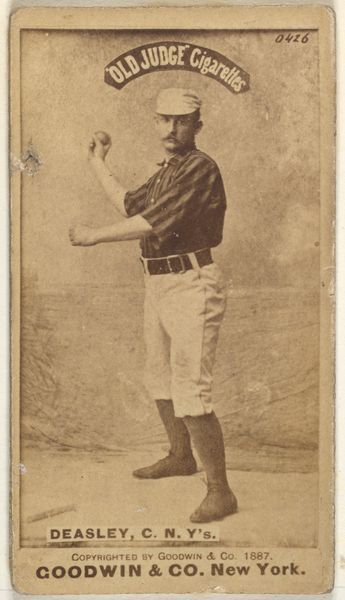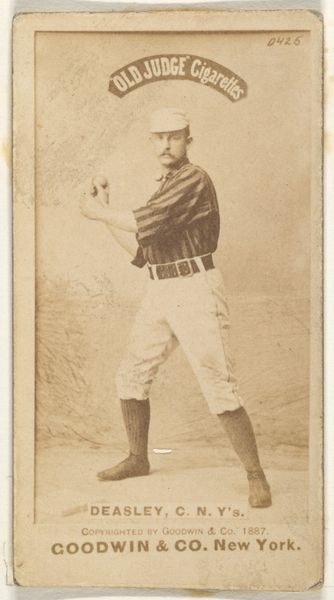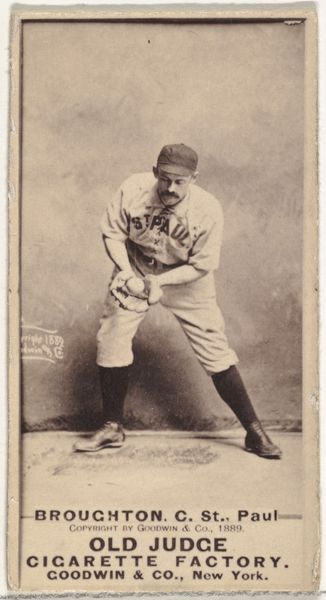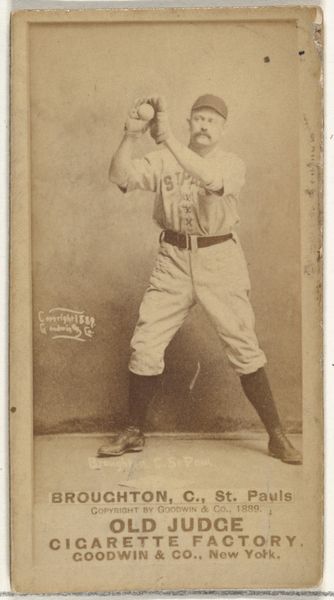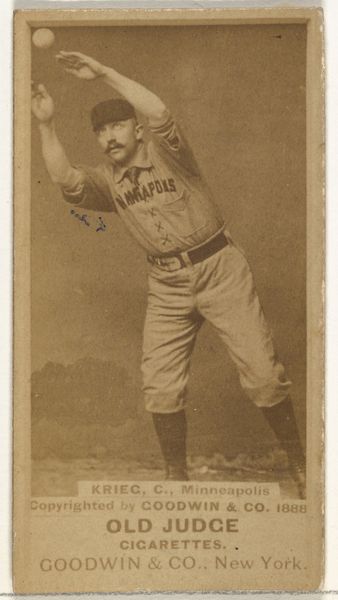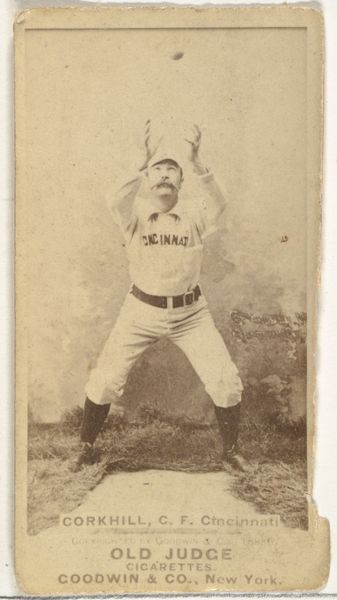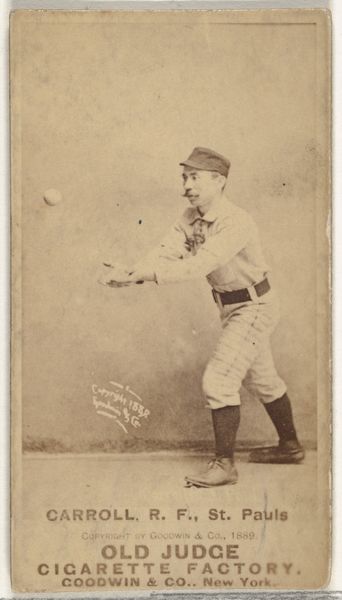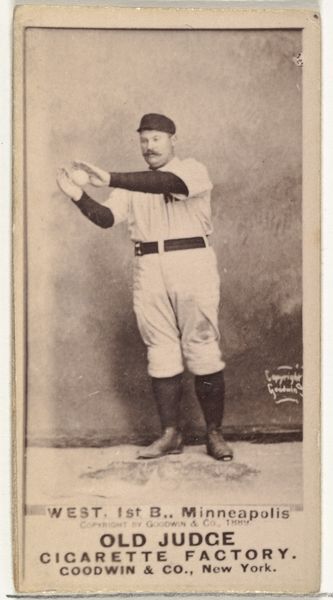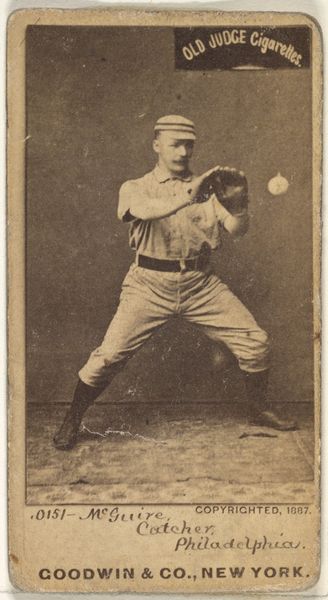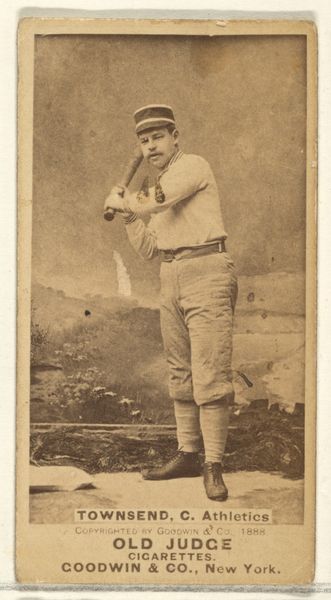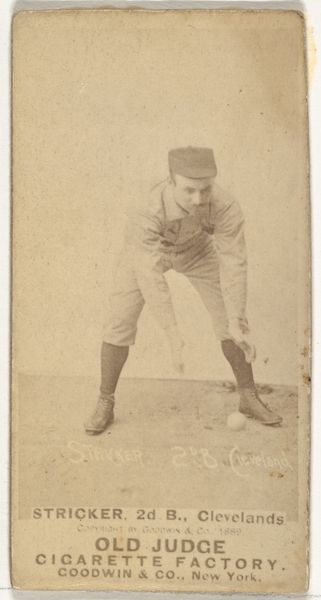
Joseph P. "Joe" Crotty, Catcher, Sioux City Corn Huskers, from the Old Judge series (N172) for Old Judge Cigarettes 1889
0:00
0:00
Dimensions: sheet: 2 11/16 x 1 3/8 in. (6.9 x 3.5 cm)
Copyright: Public Domain
Editor: This is a print from 1889 by Goodwin & Company, a baseball card of Joseph P. “Joe” Crotty. I’m fascinated by how the formal studio portrait gets redeployed as sports memorabilia, something accessible and disposable, yet it’s preserved in The Met. What do you make of it? Curator: That’s a great point. Think about the democratization of portraiture in the late 19th century. Photography became more accessible, coinciding with the rise of baseball as a popular spectacle. These cards were inserted in cigarette packs. Consider the powerful social function of popular imagery. They visually canonize Crotty and the team and are then widely disseminated through the vehicle of mass advertising. How does the relationship between baseball and consumerism play out in the image itself, and more broadly in society? Editor: It feels like an early form of celebrity endorsement. And this portrait looks more staged and formal compared to today’s sports cards, even the uniforms look historical, with ‘CITY’ printed across the front. Curator: Precisely. We have a fascinating intersection of sport, commerce, and civic identity being crafted through visual media. Also, notice how the photograph presents an idealized version of Crotty as an athlete, in contrast with the rough-and-tumble reality of the sport. Consider the institutional forces that are shaping the narratives. It's all interwoven in this one little card. Editor: I hadn’t considered the civic identity element before; it really brings new complexity to this early baseball card. Curator: Right! By examining this image and the historical context of it’s mass distribution we understand much more about baseball, consumerism, and cultural values in late 19th century America.
Comments
No comments
Be the first to comment and join the conversation on the ultimate creative platform.
